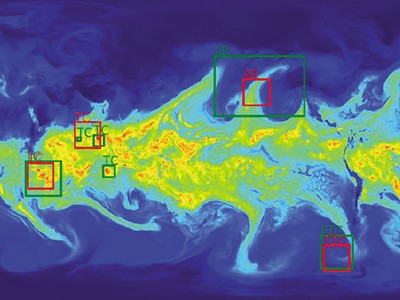
Simulating and predicting cloud convection is a particularly bedevilling problem in studies of Earth systems.Credit: Frank Bienewald/LightRocket/Getty
Barely a day goes by without a promise that artificial intelligence (AI) will revolutionize yet another aspect of life. Research fields ranging from speech recognition to biological imaging are embracing and benefiting from techniques such as deep learning.
But for some fields, integrating AI is not straightforward. The study of Earth — and its climate, oceans and biogeochemistry — is one of them. The amount of geospatial data available on these systems has exploded, with remote sensors above Earth and below the seas generating terabytes of data. But it’s a challenge for even the most advanced AI to make sense of systems that are so highly complex and — with weather being a prime example — change rapidly with space and time. Although supremely capable of training on data, AI approaches are less adept at simulating or predicting changes that occur across great distances or time spans — such as novel climates associated with a warming world.
Read the paper: Deep learning and process understanding for data-driven Earth system science
One way to crack this problem, according to the authors of a Perspective in this issue, is through a hybrid approach. The latest techniques in deep learning should be accompanied by a hand-in-glove pursuit of conventional physical modelling to help to overcome otherwise intractable problems such as simulating the particle-formation processes that govern cloud convection. The hybrid approach makes the most of well-understood physical principles such as fluid dynamics, incorporating deep learning where physical processes cannot yet be adequately resolved.
So far, the Earth-systems community has, justifiably, not abandoned physics for machine-, deep- or hybrid-learning. For example, ExtremeEarth is a proposal for a massive research project by the European Commission to directly simulate the physical processes underlying phenomena such as the control of cloud dynamics. It might sound simple, but would require an investment on the scale of the commission’s Graphene Flagship project, which has a budget of €1 billion (US$1.1 billion). Despite the cost, efforts such as ExtremeEarth have great appeal for their bold initiative to simulate the physics of climate and weather. But for others on a tighter budget, the hybrid learning approach holds promise.
Like other fields before it, geoscience should consider hybrid learning, not least because its potential will be realized only by long-term and intensive scientific inquiry. AI does promise a revolution — but, at least for now, this revolution is likely to come about more rapidly if humans and machines team up.

 Read the paper: Deep learning and process understanding for data-driven Earth system science
Read the paper: Deep learning and process understanding for data-driven Earth system science
 Build a global Earth observatory
Build a global Earth observatory
 Machine learning improves forecasts of aftershock locations
Machine learning improves forecasts of aftershock locations








